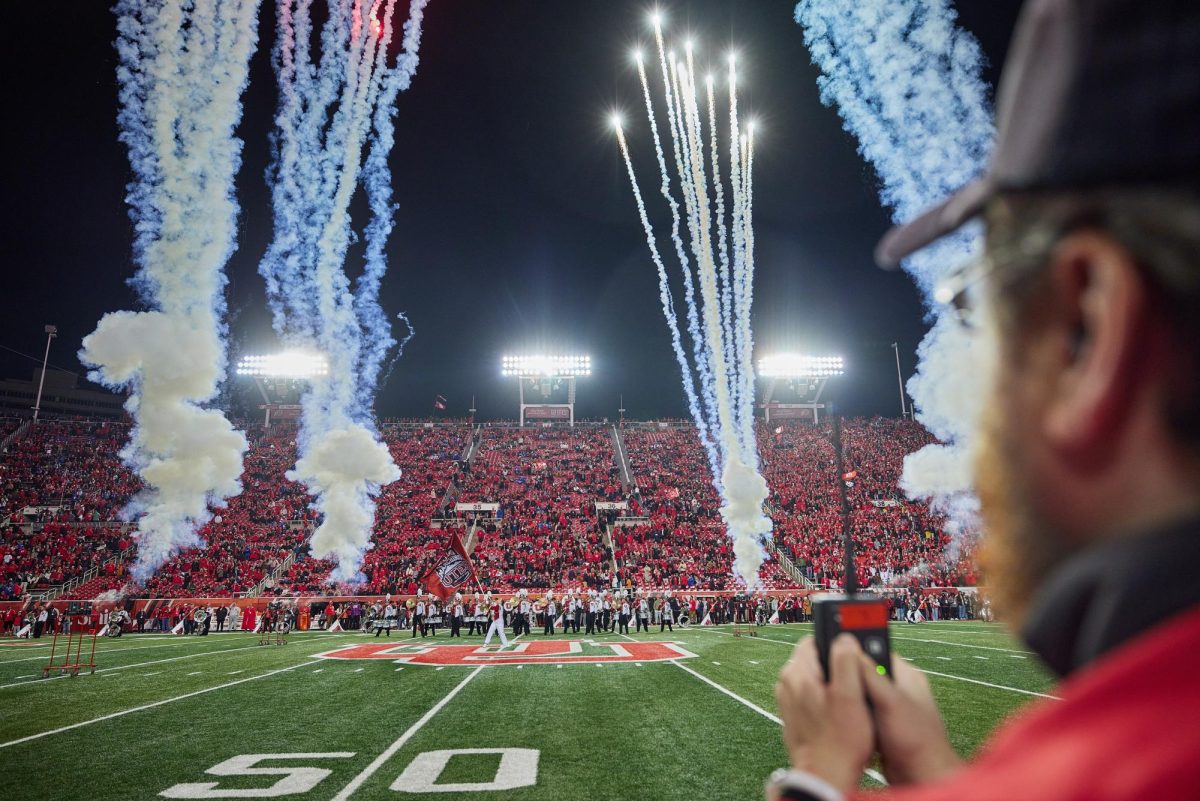Mental Illness in Media is Not a Trend
(Design by Emily Christensen | The Daily Utah Chronicle)
September 28, 2021
The emotional and mental effects of being individuals forced into isolation by a global pandemic, a seemingly doomed environmental climate, and a government divided in half regarding issues of human rights are undeniable. These descriptors, usually used in the synopsis of a dystopian novel, describe our world today. Each of these contributing factors have opened up a conversation surrounding mental health in the media.
While some are more affected than others, all are carrying that burden in one way or another.
The Platform
The social media app TikTok boomed as the pandemic began. Everyone being quarantined at home seemed to be the impetus of engaging with this new platform. TikTok’s algorithm made it incredibly easy for people with the same interests to connect with each other. It’s as if the world went from being complete strangers to a web of intertwined people who were all experiencing the same phenomenon.
And so, people took advantage of the accessibility of the app as a way to fill in the missing social interactions of this new life in isolation. The pandemic brought many new communities together, but one hashtag has dominated the TikTok platform since the pandemic began. The hashtag #mentalillness has over 1.2 billion videos which speaks volumes to the impact of this topic during such a harrowing time.
Helpful or Hurtful?
The most positive outcome has been the normalization of mental illnesses that are not as commonly discussed, and the introduction of mental health treatment that many did not know was possible. A boom of “TikTok therapists” have emerged who provide coping skills for anxiety, depression and many other mental illnesses. Since many young people do not have access to therapy, this guidance can be crucial.
According to an article written by Katherine Ellison with The Washington Post, “Before the pandemic, there were waits of four to six months to see an expert. Now sometimes it’s indefinite.” With the inability to receive help, and sometimes to afford help, if there is a licensed therapist posting videos about ways to control pandemic-induced anxiety, that is guaranteed to gain a following.
The comment sections on TikToks are a place of herd-like mindsets. If one person starts cyberbullying, there is most definitely a cluster of trolls ready to join forces and attack the content creator.
With content as delicate as mental health, viewers and creators have to be weary that all posts are subject to judgement even when they are not deserving of criticism. To read comments invalidating a person’s experience that the reader shares is damaging and has the potential to cause feelings of shame surrounding mental illness.
With the wide variety of videos and content creators on social media, there is always space for misinformation. It is imperative that with all information received through social media or mainstream media that the consumer double checks their sources. Misinformation regarding mental health is harmful especially when it is regarding diagnosis and treatments from unlicensed “TikTok doctors.”
Mental Illness is Not a Trend
Just as the Netflix series “Thirteen Reasons Why” was criticized for its romanticization of suicide and sexual assault, some TikTok creators turned the HBO Max show “Euphoria” into an aesthetic. It is not uncommon to scroll through the “for you” page, and discover videos about how to get the “Euphoria” look, a show that specifically focuses on mental health, drug abuse, sexual assault and many other serious topics.
What Does This Mean for Mainstream Media?
With all of the current exposure of mental health in social media, where does that leave mainstream media? As discussed with “Euphoria” and “Thirteen Reasons Why,” these shows have gained a lot of attraction not only for their relatability, but also for their skillfully created aesthetics.
The concept of creating a show that surrounds mental health with the ability to gain traction to spread awareness has to have a way to appeal to younger audiences, and perhaps the only way creators feel as if their show will reach their intended audience is through the romanticization of mental illness.
If that is the case, these shows need to provide scenarios in which their characters have access to help. The focus of mainstream media surrounds the mental health struggle, while TikTok acts as that helping hand guiding it to the appropriate resources.
The takeaway from this emergence of discourse of mental health in the media is that when in doubt, go seek professional attention.













